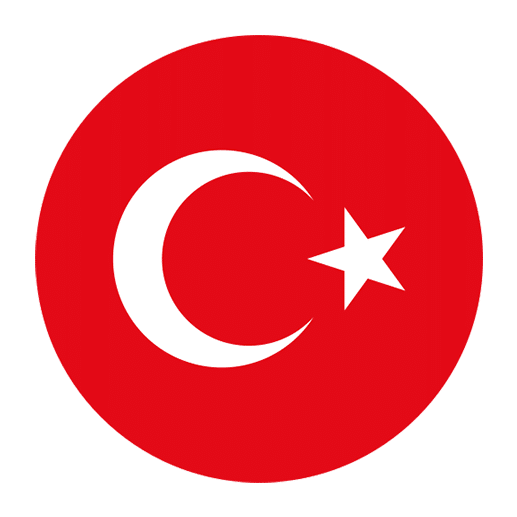Learning to describe physical appearance is an essential part of mastering any language, and Turkish is no exception. Whether you’re traveling in Turkey, interacting with Turkish speakers, or simply expanding your linguistic repertoire, knowing how to describe what people look like will enhance your communication skills. This article will guide you through the necessary vocabulary, phrases, and sentence structures to describe physical appearance in Turkish.
Basic Vocabulary for Physical Appearance
To start, let’s explore some fundamental vocabulary that you’ll need to describe physical features in Turkish.
General Descriptions
– **Person**: kişi
– **Man**: adam
– **Woman**: kadın
– **Child**: çocuk
– **Old**: yaşlı
– **Young**: genç
– **Tall**: uzun
– **Short**: kısa
– **Slim/Thin**: zayıf
– **Fat**: şişman
Facial Features
– **Face**: yüz
– **Eyes**: gözler
– **Nose**: burun
– **Mouth**: ağız
– **Ears**: kulaklar
– **Hair**: saç
– **Eyebrows**: kaşlar
– **Eyelashes**: kirpikler
– **Forehead**: alın
– **Chin**: çene
– **Cheeks**: yanaklar
Hair Descriptions
– **Blonde**: sarışın
– **Brunette**: esmer
– **Black hair**: siyah saçlı
– **Red hair**: kızıl saçlı
– **Curly hair**: kıvırcık saçlı
– **Straight hair**: düz saçlı
– **Wavy hair**: dalgalı saçlı
– **Bald**: kel
Eye Descriptions
– **Blue eyes**: mavi gözlü
– **Green eyes**: yeşil gözlü
– **Brown eyes**: kahverengi gözlü
– **Black eyes**: siyah gözlü
– **Big eyes**: büyük gözlü
– **Small eyes**: küçük gözlü
Complexion and Skin
– **Fair-skinned**: açık tenli
– **Dark-skinned**: koyu tenli
– **Tanned**: bronz tenli
– **Freckles**: çiller
– **Wrinkles**: kırışıklıklar
Forming Descriptive Sentences
Now that you have a good grasp of the basic vocabulary, let’s learn how to put them into sentences. In Turkish, adjectives usually come before the noun they describe, similar to English. However, the sentence structure can vary.
Describing Height and Build
To describe someone’s height and build, you can use the following sentence structures:
– **He/She is tall.** – O uzun.
– **He/She is short.** – O kısa.
– **He/She is slim.** – O zayıf.
– **He/She is fat.** – O şişman.
You can combine these adjectives with nouns for more detailed descriptions:
– **He is a tall man.** – O uzun bir adam.
– **She is a short woman.** – O kısa bir kadın.
– **The child is slim.** – Çocuk zayıf.
Describing Facial Features
Facial features can be described using similar structures:
– **He has blue eyes.** – O mavi gözlü.
– **She has black hair.** – O siyah saçlı.
– **He has a big nose.** – Onun büyük bir burnu var.
– **She has small ears.** – Onun küçük kulakları var.
For more complex sentences, you might say:
– **The woman with green eyes is beautiful.** – Yeşil gözlü kadın güzel.
– **The man with a big nose is my friend.** – Büyük burunlu adam benim arkadaşım.
Describing Hair
Hair descriptions can be quite detailed. Here are some examples:
– **He has curly hair.** – O kıvırcık saçlı.
– **She has straight hair.** – O düz saçlı.
– **The boy has wavy hair.** – Çocuğun dalgalı saçları var.
You can add colors to these descriptions:
– **She has blonde curly hair.** – O sarışın kıvırcık saçlı.
– **He has black straight hair.** – O siyah düz saçlı.
Describing Complexion and Skin
Talking about someone’s complexion and skin involves specific adjectives:
– **He is fair-skinned.** – O açık tenli.
– **She is dark-skinned.** – O koyu tenli.
– **He has freckles.** – Onun çilleri var.
– **She has wrinkles.** – Onun kırışıklıkları var.
For combined descriptions:
– **The girl with freckles is cute.** – Çilli kız sevimli.
– **The old man with wrinkles is kind.** – Kırışıklıklı yaşlı adam kibar.
Using Comparative and Superlative Forms
Comparing physical appearances is another useful skill. In Turkish, comparative forms are created by adding the suffix **-daha** before the adjective, and superlative forms use **en** before the adjective.
Comparative Descriptions
– **He is taller than me.** – O benden daha uzun.
– **She is slimmer than her sister.** – O kız kardeşinden daha zayıf.
– **He is older than my brother.** – O erkek kardeşimden daha yaşlı.
Superlative Descriptions
– **She is the tallest in the class.** – O sınıftaki en uzun.
– **He is the slimmest in the team.** – O takımda en zayıf.
– **She is the most beautiful woman here.** – O buradaki en güzel kadın.
Practice Makes Perfect
The best way to get comfortable with these descriptions is through practice. Here are some activities you can do:
Observation and Description
Spend some time people-watching in a public place. Try to describe the people you see using Turkish. This will help you think on your feet and improve your descriptive abilities.
Flashcards
Create flashcards with pictures of people and write their descriptions in Turkish on the back. Quiz yourself or a study partner to reinforce the vocabulary and sentence structures.
Language Exchange
Engage in language exchange with a Turkish speaker. Describe people in your surroundings or use photos. This interactive method will provide immediate feedback and help solidify your understanding.
Common Mistakes to Avoid
When learning to describe physical appearance in Turkish, learners often make some common mistakes. Here are a few tips to avoid them:
Adjective-Noun Agreement
Ensure that the adjectives agree with the nouns they describe in terms of number and gender. While Turkish does not have gendered nouns, paying attention to singular and plural forms is crucial.
Word Order
Remember that adjectives usually come before the nouns they modify. For example, “long hair” should be “uzun saç,” not “saç uzun.”
Pronunciation
Pay attention to pronunciation, especially with vowels and certain consonants that may be different from English. Mispronouncing words can lead to misunderstandings.
Conclusion
Describing physical appearance in Turkish is a valuable skill that will greatly enhance your communication abilities. With the vocabulary, sentence structures, and practice activities provided in this article, you’ll be well on your way to confidently describing people in Turkish. Remember, consistent practice and real-life application are key to mastering any language skill. Happy learning, and iyi öğrenmeler!

